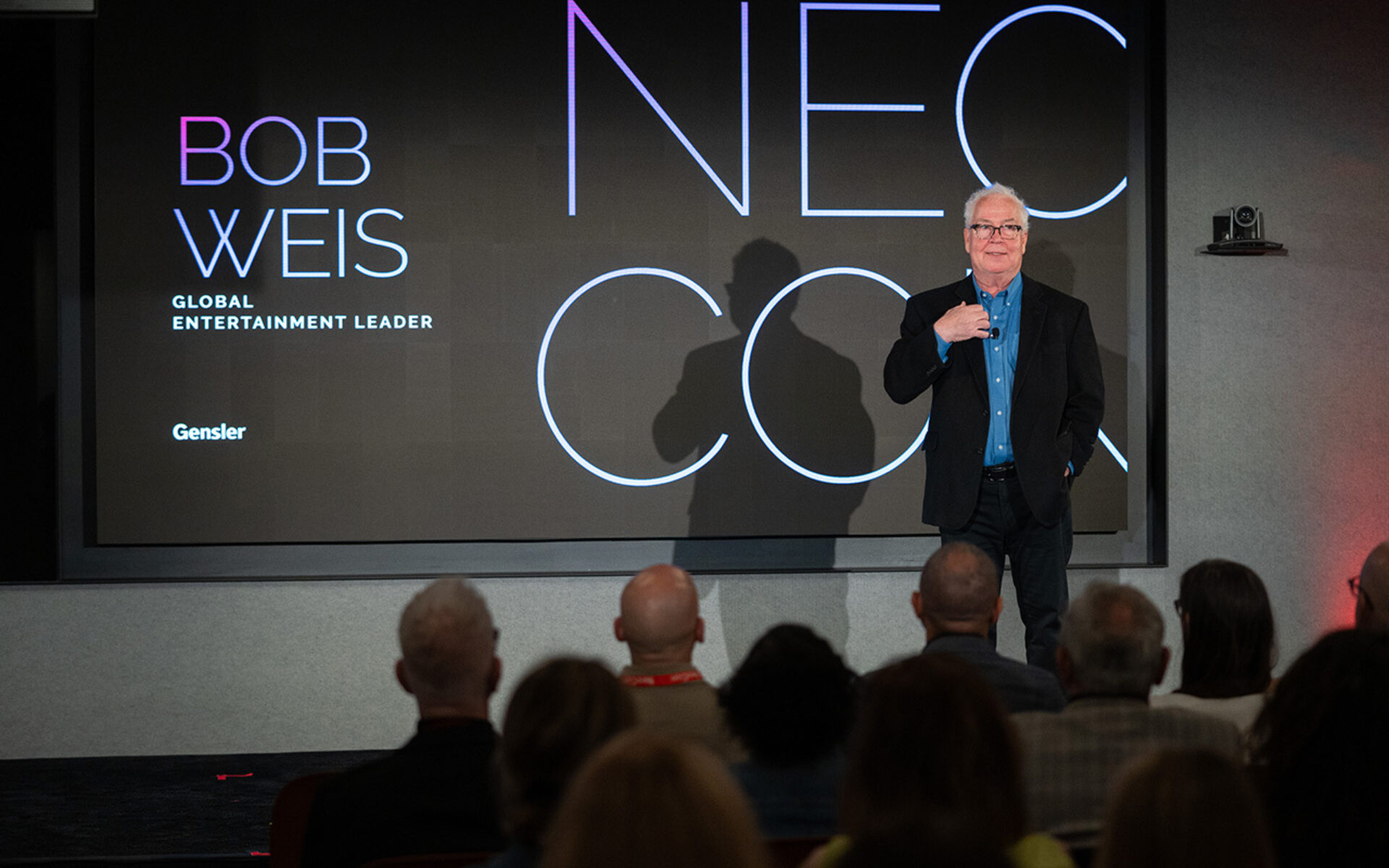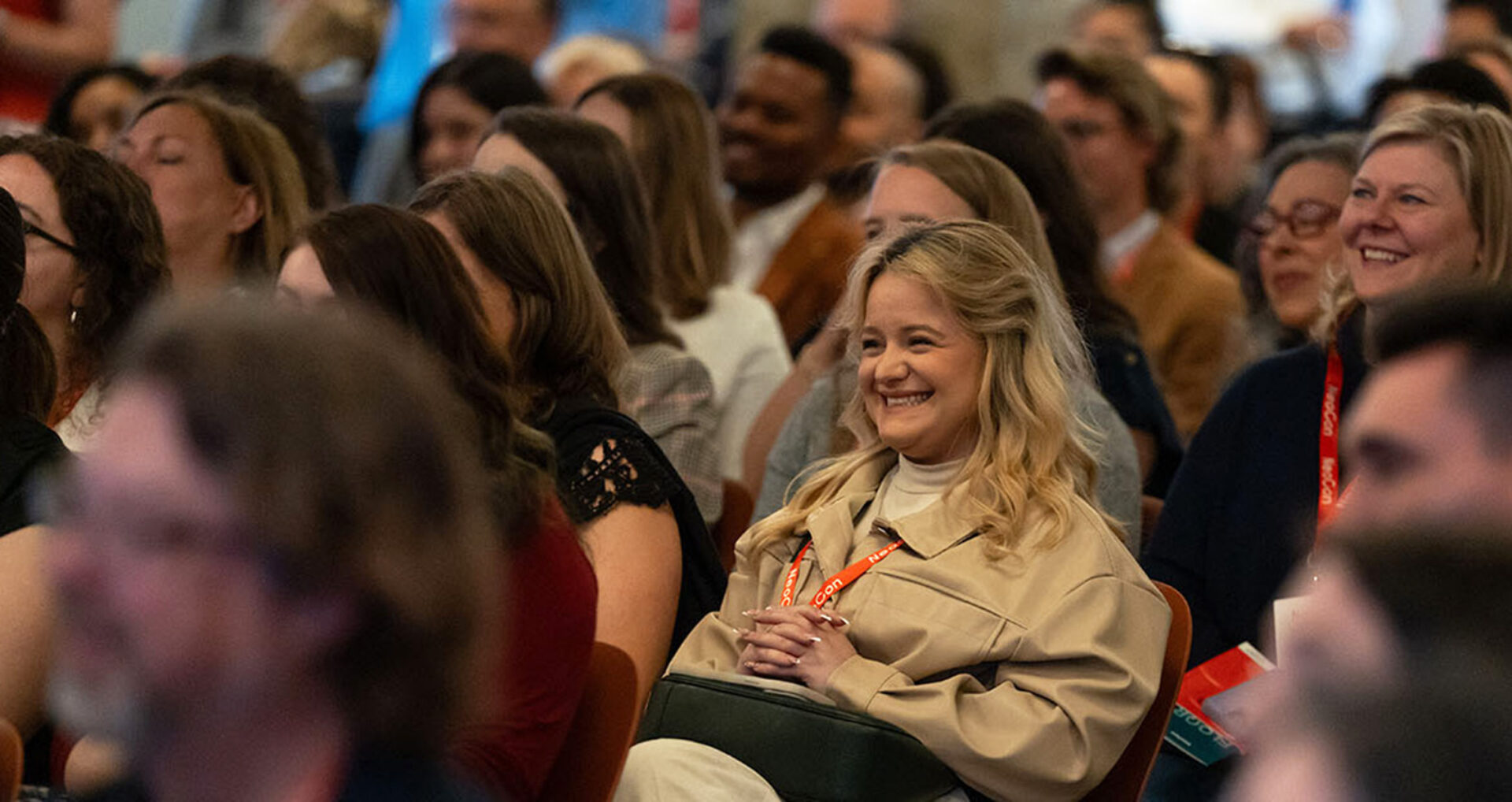(Above image: IIDA holds Keynote presentation and Live Collective Design panel during NeoCon 2024. Photo credit: Elliot Mandell)
“We’re all dreamers,” said Bob Weis, Gensler’s global entertainment leader and former president of Walt Disney Imagineering, to a room full of design professionals. “But we do more than dream. We allow creativity to flourish and we get shit done.”
At this year's NeoCon, two key programs presented by IIDA underscore the transformative power of storytelling and experiential design in the built environment. The first, a keynote by Weis presented by IIDA on the power of storytelling in placemaking, offered insights from Weis’s journey from Disney to Gensler and beyond. Complementing this, IIDA's live episode of our Collective Design series focused on the future of experience. The panel, moderated by Mark Bryan, IIDA, senior foresight manager at the Future Today Institute and IIDA’s Futurist-in-Residence, delved into how experiential design is reshaping the industry, featuring experts with backgrounds in neuroscience and hospitality.

Elliot Mandel

Elliot Mandel
With more than 30 years at Walt Disney Imagineering, Weis has an extensive background in creating story-driven experiences in Disney properties around the world. At Gensler, he applies this expertise to everyday spaces—office buildings, health facilities, cultural centers. “There’s always gonna be a good story,” he said, adding: “The story is design and design is the story.” Drawing connections between Art Gensler and Walt Disney, Weis emphasized setting the stage, crafting immersive environments that allow guests to feel both anchored and empowered to write themselves into the story of a place. “Storytelling is powerful, emotional, and brings you back to center,” he said. From cutting-edge technology to innovative design, years-long research, and obsessive detail, “it’s about the magic—or whatever you call the intangible thing that builds people’s connection to place.”
(Below Image: Bob Weis at IIDA 2024 NeoCon Keynote. Photo credit: Elliot Mandel)

During IIDA’s annual live episode of Collective Design, Mark Bryan drew a line between our connection to place and the power of experience. Immersive experiential design that engages the senses while integrating design storytelling is a crucial part of the evolving design landscape. The program brought together leading experts with several decades of experience creating functional, beautiful, welcoming spaces, including Upali Nanda, global sector director of innovation and executive vice president at HKS; Lauren Rottet, FIIDA, president and founding principal of Rottet Studio; Lori Mukoyama, IIDA, principal and global leader of hospitality at Gensler; and Brian Graham, IIDA, founder and creative director of Graham Design.
Working recently with the inclusive design team at Google, Nanda said, she embraced a new definition of experiential design: “Experience design is a cohesive, single creative strategy that brings all design disciplines together.” She encouraged designers and their clients to think about their desired experiential outcome—which is inherently tied to the business value proposition— and to make a business case around “the return on experience, not just return on investment.”
To achieve this, it’s crucial to build multidisciplinary, integrated teams where, for instance, “technologists and interior designers and urban planners and anthropologists and psychologists are one team designing experience, instead of dividing up,” Nanda said, adding, “We have limited ourselves by boxing ourselves into containers of our profession.”

Elliot Mandel

Elliot Mandel
The common thread (and biggest takeaway) between the two programs: As a designer, you can never think too big—or too small. Consider the overarching design story and the tiniest sensory details. As Rottet put it: “It’s about the experience. What did you touch, hear, or smell? How’s the story going to unfold?” On top of that, consider the perspectives of different populations and generations, Mukoyama said. “We always do a day-in-the-life [of an end user] because everything plays a role when it comes to figuring out the value of a place; it’s about what you invite people to do.” Her advice? “Don’t be siloed.” Graham described it this way: “Slow down, stop, and observe,” he said, urging us all—designers or not—to exercise our empathy muscle.
“Designers are futurists because they create something that doesn’t exist today,” said Bryan, who views the future as a cone of eventualities and uncertainties which we must prepare for. Looking ahead, the conversation naturally turned to AI. Nanda emphasized the need for “embodied intelligence,” which offers insights into the three-dimensional aspects of our environments. “It’s where the physical and the virtual converge that you get an incredibly curated, truly personalized experience,” she said—and everyone agreed that this is truly the future of crafting nuanced, human-focused places to live, work, and play.






